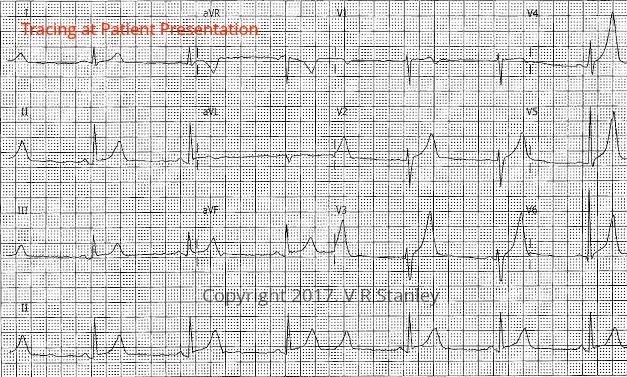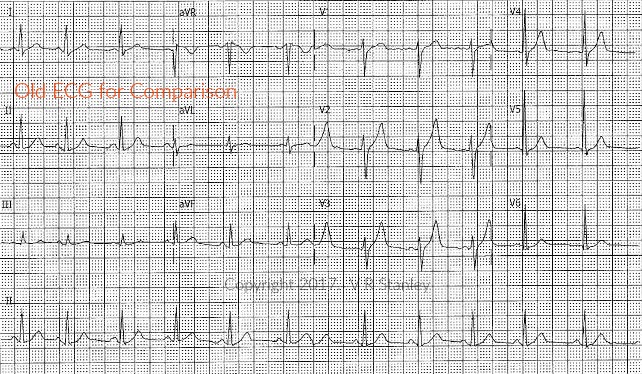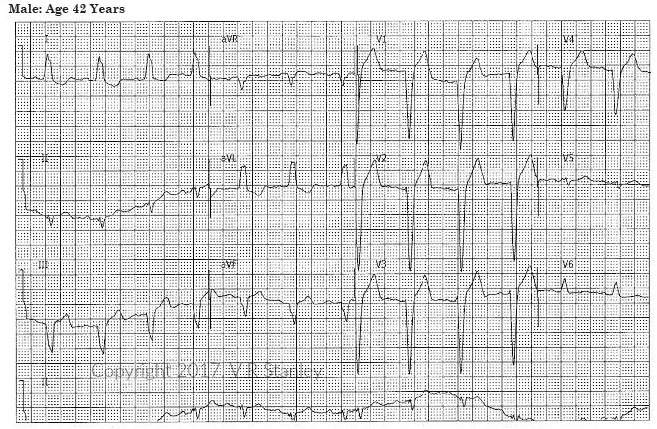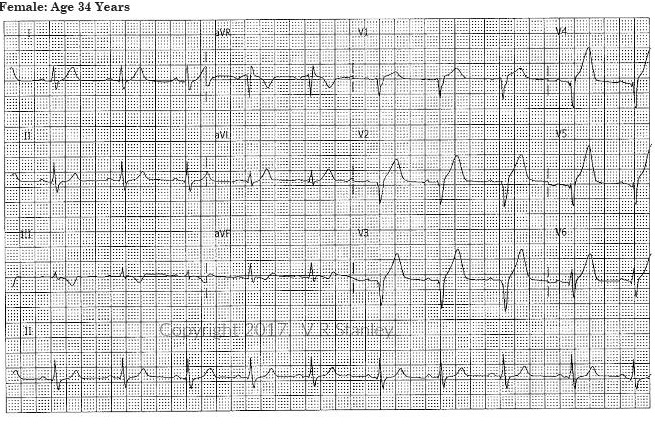TRACING #6
Tracing 6: STEMI?
This tracing exhibits:
- Peaked T-waves and ST elevation in leads V1, V2, V3, V4
- |QRS| > 0.12 sec
- Lead I all upright
- RSR’ slur or notch Lead I, II, III, avL, avF, V5, V6
Summary: This tracing represents a classic LBBB with Secondary T-wave changes.
No. This tracing is not a STEMI.
TRACING 7
Tracing 7: STEMI?
This tracing exhibits:
- ST Depression: V3-V6, I, II, avL
- ST Elevation: V1, slight in III
- Peaked Ts in V1, V2; T-wave inversion/biphasic V4-V6, I, avL
Summary: LVH with ST-T changes; Axis approximates -30 degrees; IVCD
No. This tracing does not represent a STEMI.
Tracing 8a and 8b (new and old ECGs, respectively)
8a…NEW
8b…Old for Comparison
Tracings 8a & 8b: STEMI?
We note the following from the tracings above:
- Tall peaked T-waves
- diffuse ST elevations (concave up)
- PR segment depression noted
- Lead avR changes?………….PR-segment elevation, ST-segment depression
Summary: Acute Pericarditis (the differential must include the possibility of developing hyperacute Ts , Hyperkalemia).
No, this tracing does not represent a STEMI. This patient should be very closely monitored with serial ECGs, labs, cardiology consult, echocardiogram, hospital admission, etc………………as always, the patient care is dictated by clinical correlation.
TRACING 9
Tracing 9: STEMI?
This tracing exhibits:
- Significant Qs Lead III, avF, V1, V2; Peaked Ts
- |QRS| > 0.12 sec
- Lead I upright with slur (notch)
- RSR'(notched) noted V6
Summary: LBBB with Secondary T-wave changes, Left Axis, Late Transition – Pseudoischemia patterns secondary to the LBBB.
No. This tracing does not represent an acute STEMI.
TRACING 10
Tracing 10: STEMI?
This tracing exhibits:
- Tiny Rs or Qs Leads V1 to V5
- Broad, symmetrical,smooth peaked, tall T-waves in the Antero-lateral-highlateral leads and ST-elevations.
- ST downsloping and biphasic Ts in Lead III, avF
- Of note is the absence of LVH and LBBB
Summary: Hyperacute T-waves and ST elevations of Acute Antero-Lateral-highlateral MI (STEMI)
Yes. This tracing represents an acute STEMI.
Please click “MARK COMPLETE” or “NEXT”.






